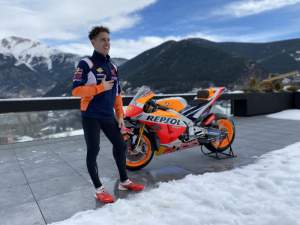Moto2’s 2019 champion Alex Marquez was one of the big surprises of last year’s MotoGP campaign, and not because his final result of 14th place and 74 points was particularly unexpected.
Rather, it was the path that he took there – from being signed as the retiring Jorge Lorenzo’s replacement on late notice and being dropped for 2021 before he even started a premier-class race, to suddenly livening up what was effectively the worst season in Repsol Honda history with a one-two punch of podiums, both of which could’ve easily been wins.
Now that he heads into 2021 as an LCR Honda rider, Marquez remains something of an enigma, which he has been for so long. He’s still that same rider who won the 2012 CEV Moto3 title with a race to spare and followed it up with the Moto3 title over Jack Miller two years later, yet then needed some five seasons to get on top of the intermediate class.
He could yet do well enough to reclaim the factory Honda ride at the end of his current two-year LCR deal. He could cement himself as a solid satellite-team rider. Or he could drop out entirely at the end of 2022, following in the footsteps his ‘20 team-mate, past LCR rider and fellow Moto2 champion Stefan Bradl. With Marquez, we just don’t know yet.
But his rookie campaign was certainly not devoid of valuable information, and upon reflection there are two major prisms through which we can already view Alex Marquez the MotoGP rider.
The qualifying question
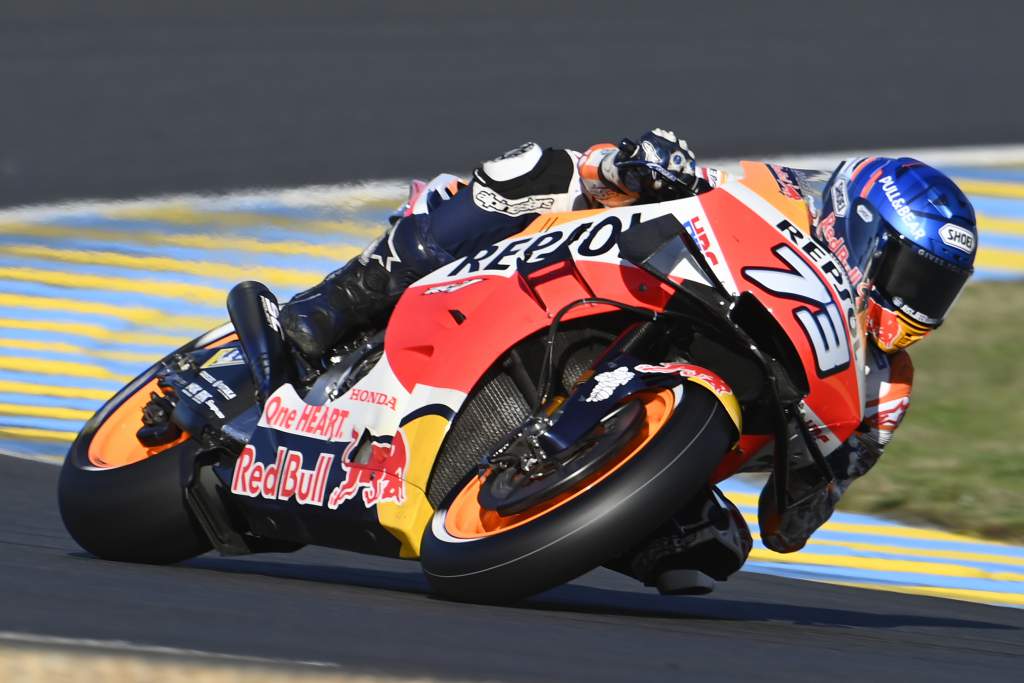 Marquez’s pre-season form was ropey enough to where Honda didn’t hesitate to pull the trigger and draft Pol Espargaro into the works team before any racing had taken place. Yet it is also true that it became very clear early on that Marquez represented an upgrade on Lorenzo.
Marquez’s pre-season form was ropey enough to where Honda didn’t hesitate to pull the trigger and draft Pol Espargaro into the works team before any racing had taken place. Yet it is also true that it became very clear early on that Marquez represented an upgrade on Lorenzo.
Lorenzo’s Honda season was a total disaster and of course comfortably the worst season of an otherwise superb MotoGP career. Despite starting out injured, he seemed to be making incremental progress with the RC213V but big crashes in Barcelona and Assen took the wind out of his sails and led to the experiment being aborted early.
In July, just as the delayed 2020 campaign had commenced with the Jerez double-header, Lorenzo tweeted a snippet of data that indicated he’d been quicker on the RC213V at the venue than the younger Marquez, but added: “I am sure that with time, and if he does not have bad luck with injuries, he will end up going much faster than me (with the Honda)”.
That prediction panned out. By the end of 2020, Marquez’s Honda season had surpassed Lorenzo’s in basically every metric – he scored podiums, he scored more points per race (5.3 versus 1.9), he posted a higher average finish (10.9 versus 14.5).
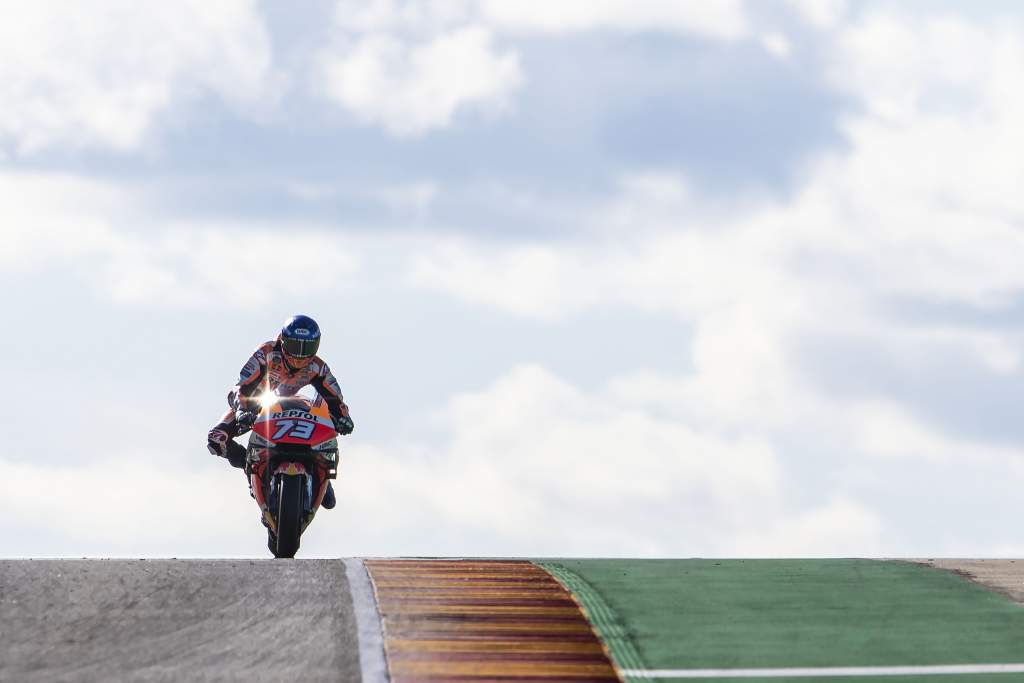
But that was on Sundays. On Saturdays, Marquez was taking a beating – his average grid position of 17.1 compares unfavourably to Lorenzo’s 15.5, and Lorenzo made more Q2 appearances in his first three races on the Honda than Marquez did in all of 2020.
How Marquez ranked on average among 2020 Hondas
Free practice – 2.08th out of 3
Qualifying – 2.25th out of 3
Race – 1.77th out of 3
Qualifying difficulties became a consistent topic of Marquez’s media debriefs all throughout the year. He was consistently faster in race trim right away, usually a lot faster. As he would explain it, “when we put the new tyre [on], everything is more out of control”.
“The bike changes a little bit, it’s a bit more radical, moving more, shaking more,” he added. “I need to maybe close the eyes a little bit and push more, but at the moment I don’t have the feeling to do it.”
And the one-lap feeling never really came. Marquez at least had test rider Bradl, drafted in with little prep to replace his injured brother Marc, covered for most of the season, but Bradl inflicted three consecutive qualifying defeats upon him to close out the campaign.
A lack of good qualifying form is no insurmountable hurdle to MotoGP success, as Suzuki showed last year, but Marquez’s was too lagging and given the Honda doesn’t love being in traffic, it’s something he will have no choice but to address in 2021.
In-season development
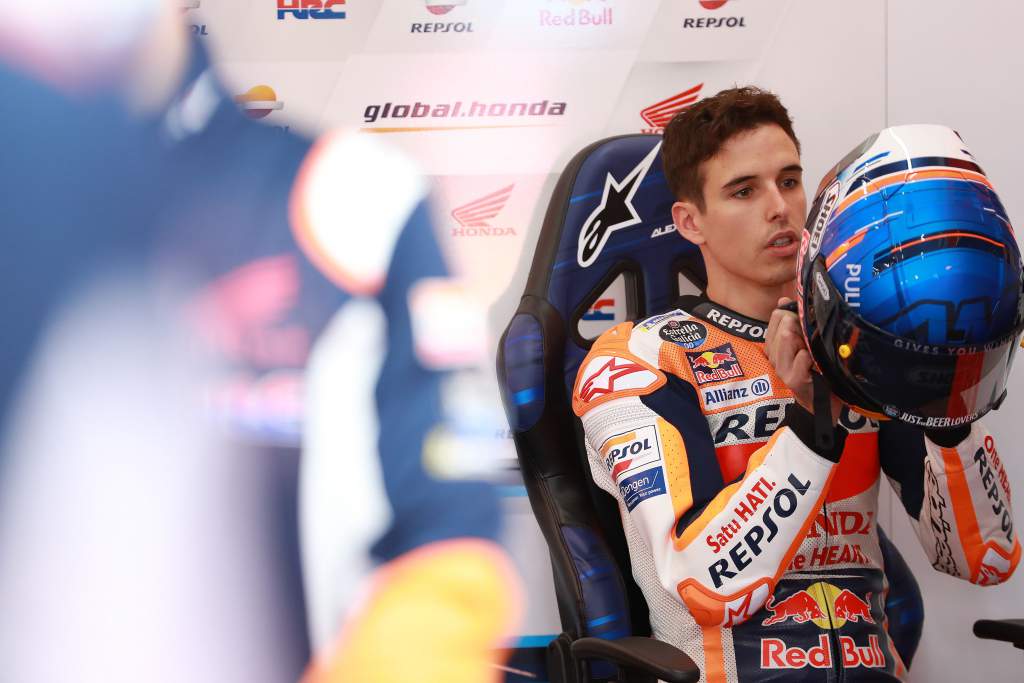
Between the two races of the Misano double-header, there was a midweek test day in which Marquez seemed to make big strides with his understanding of the Honda.
“For me, the main thing, the season we need to separate [into two],” he would later say. “First part of the season until the Misano test, and after the Misano test it’s like a different Alex, different riding style also.
“The test in Misano was like a refresh for me, because as I’ve said many many times that after Qatar [pre-season testing] I didn’t have the opportunity to have one day free, testing with the bike, trying to step by step – not to try many things on the bike, just to catch the feeling.
“Because, okay, in the Misano test we tried many things but the plan was to only make 60 laps, but at one point of the day I said, ‘okay, now we tried everything, now just give me tyres and let me out on track alone’, to try things on the bike, to try to be smooth, to try things on the riding style and catch feelings and confidence that you need on the bike.”
Marquez compared to other Honda riders in 2020
| vs Bradl | vs Nakagami | vs Crutchlow | |
| Average FP gap* | -0.260s | +0.512s | +0.224s |
| Qualified ahead | 6 of 11 | 0 of 14 | 2 of 12 |
| Average Q gap** | -0.006s | +0.633s | +0.447s |
| Finished ahead | 7 of 11 | 3 of 13 | 6 of 10 |
| Average R gap*** | -10.621s | +7.283s | +0.375s |
| Points per race gap | -2.8 | +3.0 | +2.4 |
* taken from best time across FP1/FP2/FP3, adjusted for 90-second lap
** taken from qualifying sessions both contested, adjusted for 90-second lap
*** Red Bull Ring races adjusted for distance
In truth it was probably a bit more incremental than that – Marquez seemed to make several steps forward during the season, and the Misano test was followed by two race weekends that were only marginally more promising, before he properly broke out in the wet Le Mans race and then the Aragon double-header.
His final three weekends of the season – two at Valencia and one at Portimao – were then relatively indifferent, although this can be partly explained by a wrist injury Marquez sustained in qualifying for the season’s penultimate race.
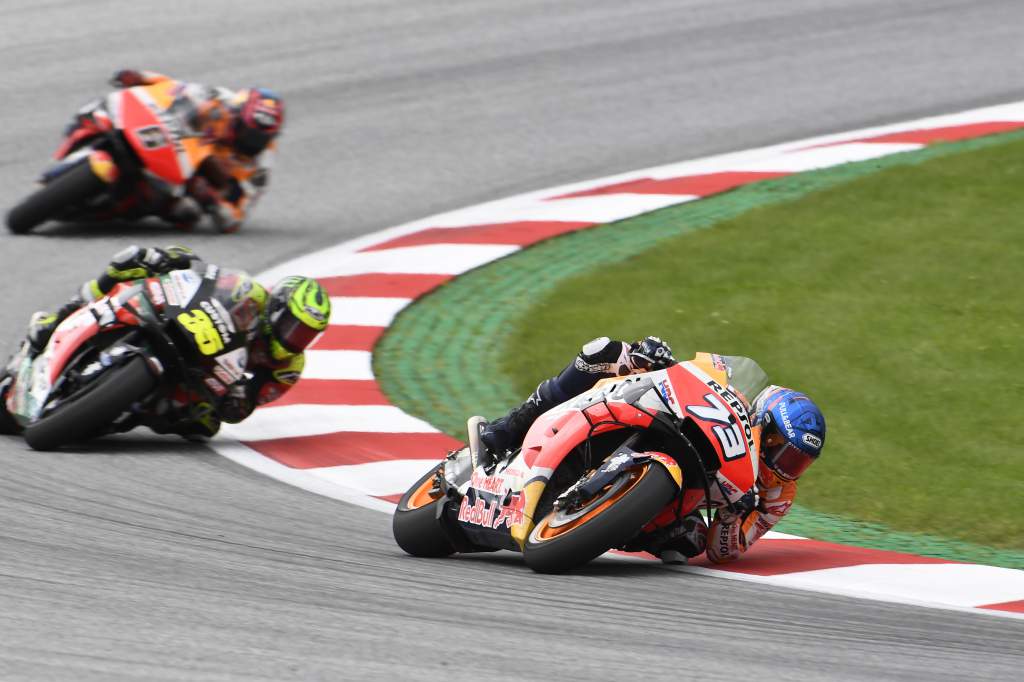
Overall, the numerical evidence behind a Misano breakthrough – or at least obvious in-season development – is sound.
Following the test, in practice sessions he was quicker relative to all three of his regular Honda stablemates, averaging a 0.298s advantage over Bradl compared to 0.174s before the test, and 0.374s and 0.217s deficits to Nakagami and Crutchlow respectively compared to 0.679s and 0.299s. His average race deficit to the winner also shrunk from 25.5s to 13.3s (with the two Red Bull Ring races adjusted for length due to the restarts).
Admittedly the qualifying data is pretty inconclusive, and it’s clear the 2020 Honda just got better over the course of the season, but Marquez’s injury – and the fact he was on course to beat Bradl handsomely in the first Valencia race before crashing out (and that Bradl had relatively recent Portimao experience from World Superbikes) – gives him strong benefit of the doubt in that his late-season dip wasn’t a reversion to early-2020 form.
But was it any good?
 With all that in mind, did Alex Marquez have a good debut season in 2020? That’s a yes – not the most emphatic yes, but a yes nonetheless.
With all that in mind, did Alex Marquez have a good debut season in 2020? That’s a yes – not the most emphatic yes, but a yes nonetheless.
The 2020 Honda wasn’t the manufacturer’s finest work. Marc Marquez’s Spanish GP appearance made it clear he could work miracles with it, but he was the only one, and even he made two big errors in its debut race, the second of which would cost him the season.
The younger Marquez was never going to be as quick, so he hunkered down, usually kept the bike on the asphalt and worked his way up to a respectable pace, and two podiums in different conditions. His pace at Aragon in particular made it clear he is a proper MotoGP rider already.
None of that means that Honda is worse off for having demoted him to LCR and plugged Espargaro into the main line-up – it probably isn’t – but it certainly would’ve had a much tougher time justifying a decision like that if it had to make it after the end of the 2020 campaign.
MotoGP rookie seasons since 2017
| Rider | Team | Position | Wins | Podiums | Pts per race |
| Fabio Quartararo | Petronas Yamaha | 5th | 7 | 10.11 | |
| Johann Zarco | Tech3 Yamaha | 6th | 3 | 9.67 | |
| Jonas Folger | Tech3 Yamaha | 10th | 1 | 6.46 | |
| Brad Binder | KTM | 11th | 1 | 1 | 6.21 |
| Joan Mir | Suzuki | 12th | 5.41 | ||
| Alex Marquez | Honda | 14th | 2 | 5.29 | |
| Alex Rins | Suzuki | 16th | 4.54 | ||
| Franco Morbidelli | Marc VDS Honda | 15th | 3.13 | ||
| Francesco Bagnaia | Pramac Ducati | 15th | 3.00 | ||
| Hafizh Syahrin | Tech3 Yamaha | 16th | 2.56 | ||
| Iker Lecuona | Tech3 KTM | 20th | 2.45 | ||
| Miguel Oliveira | Tech3 KTM | 17th | 2.06 | ||
| Sam Lowes | Aprilia | 25th | 0.28 | ||
| Xavier Simeon | Avintia Ducati | 27th | 0.06 | ||
| Tom Luthi | Marc VDS Honda | 29th | 0.00 |



